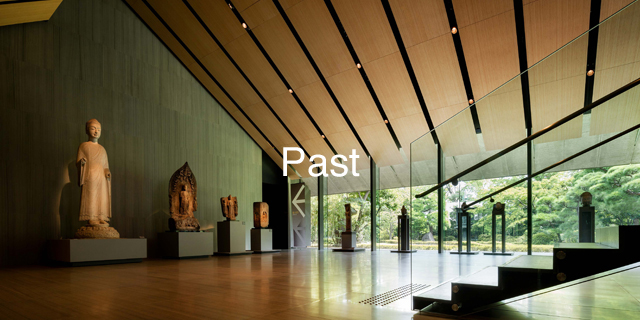
-
Museum Collection Exhibition
Bodhisattva of Salvation
The Art of Jizō - Saturday, May 27 – Sunday, July 2, 2023
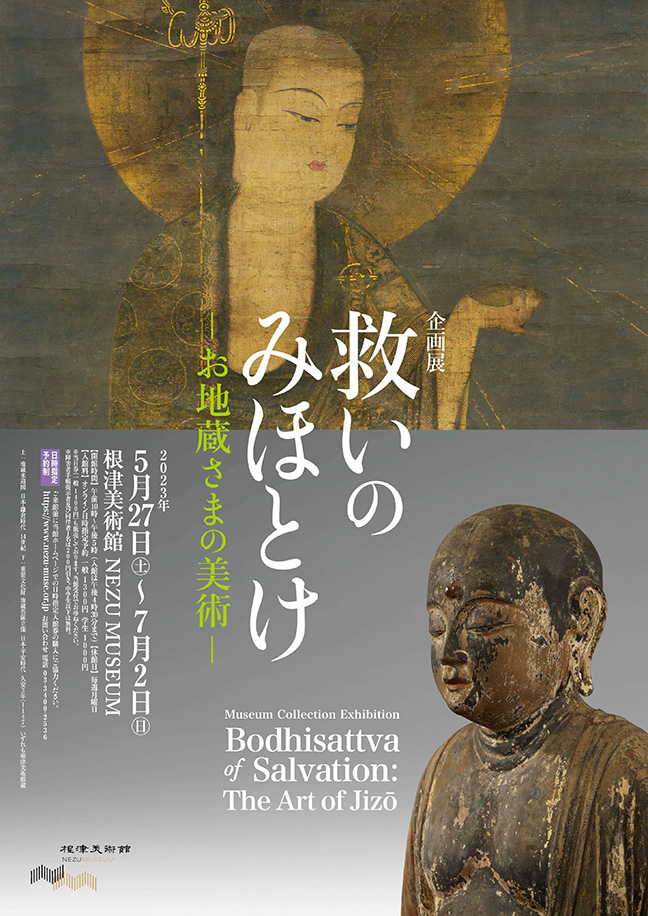

| Closed | Mondays |
|---|---|
| Hours | 10 a.m. - 5 p.m.(last entry: 4:30 p.m.) |
| General admission | Adult 1300 yen, Student 1000 yen |
| Gallery | 1/2 |
Jizō-bosatsu, known affectionately as “O-Jizō-sama,” is a Buddhist deity whom probably all Japanese know. Faith in Jizō-bosatsu developed in the Heian period (794-1185), and belief in Jizō as the deity who saves all humankind was established in the latter half of that period. Since then, Jizō has been worshipped in every region and every period, and multitudes of paintings and sculptures of that deity have been created.
This exhibition, which is centered on Buddhist paintings and sculptures from the museum collection, presents an overview of the history of faith in Jizō in Japan and its ramifications. We hope that visitors will enjoy this opportunity to learn about the splendid and diverse world of art associated with Jizō-bosatsu.
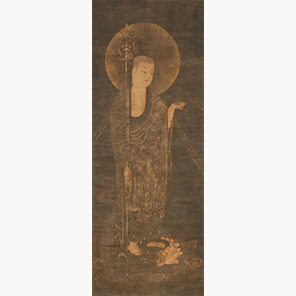
- Jizō-bosatsu(Kşitigarbha)
- Hanging scroll; ink and color on silk
- Japan Kamakura period, 14th century
Nezu Museum - This painting depicts Jizō-bosatsu, holding a sacred gem in the left hand and a staff in the right, arriving on a white cloud to guide all humankind to the Pure Land. Many similar “descent of Jizō-bosatsu” paintings have been created from the Kamakura period (1185-1333) on. The delicate rendering of Jizō’s facial features suggest that this painting dates from the latter half of the Kamakura period. It is being exhibited for the first time.
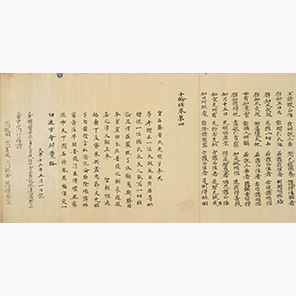
- Daihōkō-jūrin-kyō (Mahāyānăbhismaya-sūtra), Known as the Gogatsu-tsuitachi-kyō
- Handscroll; ink on paper
-
Japan Nara period, 8th century
Nezu Museum - This handscroll is one volume from the copy of the complete Buddhist sutras (issai-kyō) that Emperor Shōmu’s consort, Empress Kōmyō, commissioned for the memorial service for her parents. Because the written prayer associated with the handscrolls states, “First day of the fifth month of 740,” it is called the Gogatsu-tsuitachi-kyō, “Sutra of the First Day of the Fifth Month.” It is precious as a rare example of a sutra copy related to faith in Jizō-bosatsu in the Nara period.
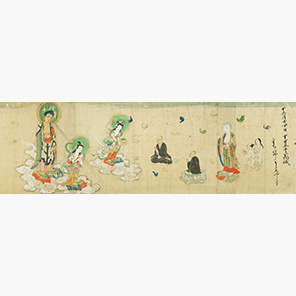

- Legends of Yata Jizō-bosatsu (Ksitigarbha of Yata Temple)
- Handscroll; ink and color on paper
-
Japan Muromachi period, 16th century
Nezu Museum - This picture scroll depicts the miracle by which, through the virtuous deeds of making a pilgrimage to Kongōsenji Temple (commonly known as Yata Temple) on a certain day each month and praying to Jizō-bosatsu, one can be saved from the torments of hell. It teaches that by visiting the temple on the 24th of the twelfth month and praying, rebirth in Paradise is set.
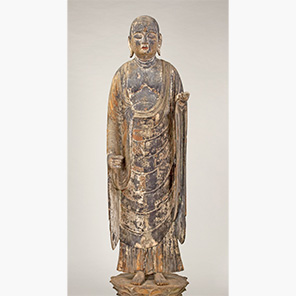

- Standing Jizō-bosatsu (Ksitigarbha)
- Polychromed wood
-
Japan Heian period, dated 1147
Nezu Museum - The inscription in sumi ink inside this statue tells us that it was Minamoto no Yoshikane and others who had this statue made by the Buddhist sculptor-priest Kaijo. It is the oldest example of a statue of Jizō-bosatsu with an inscription. Its face and figure present the gentle mildness characteristic of the latter half of the Heian period.
